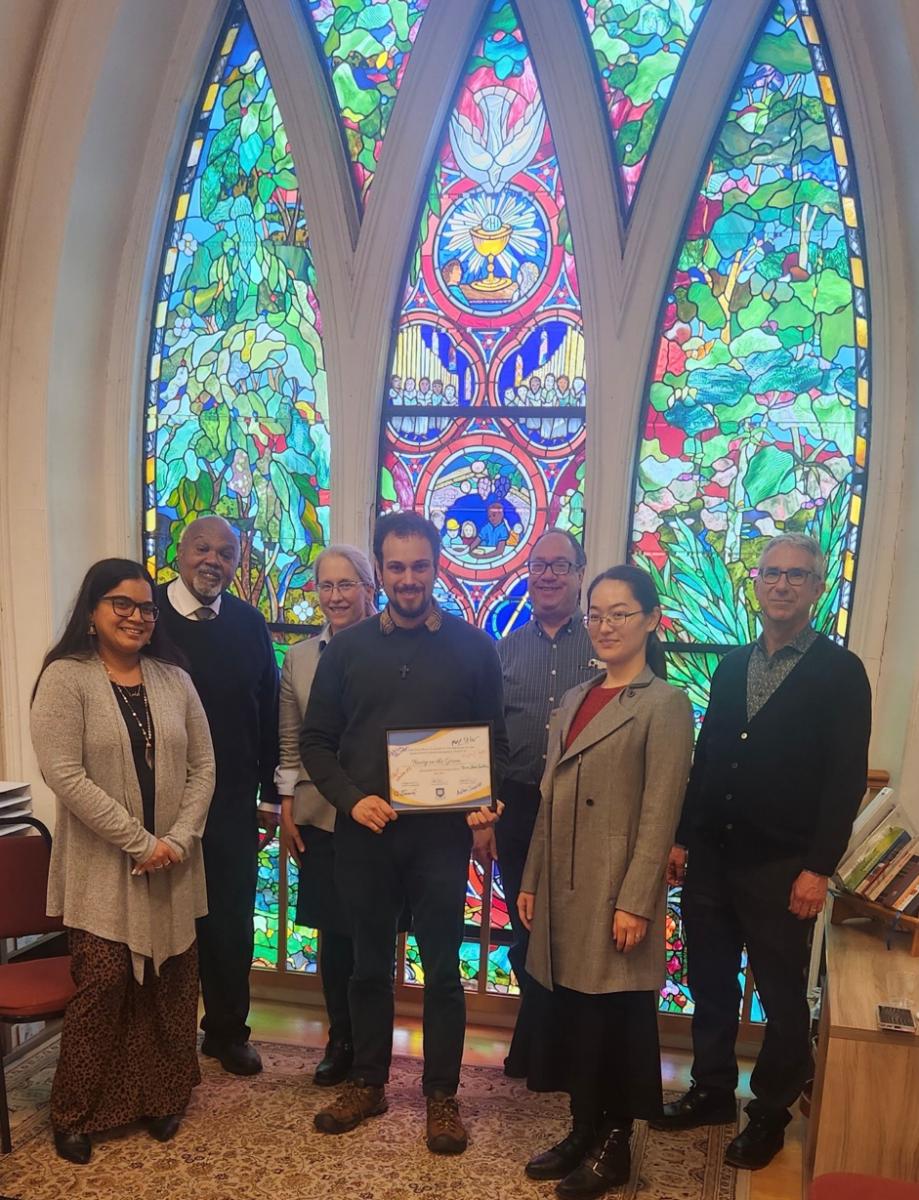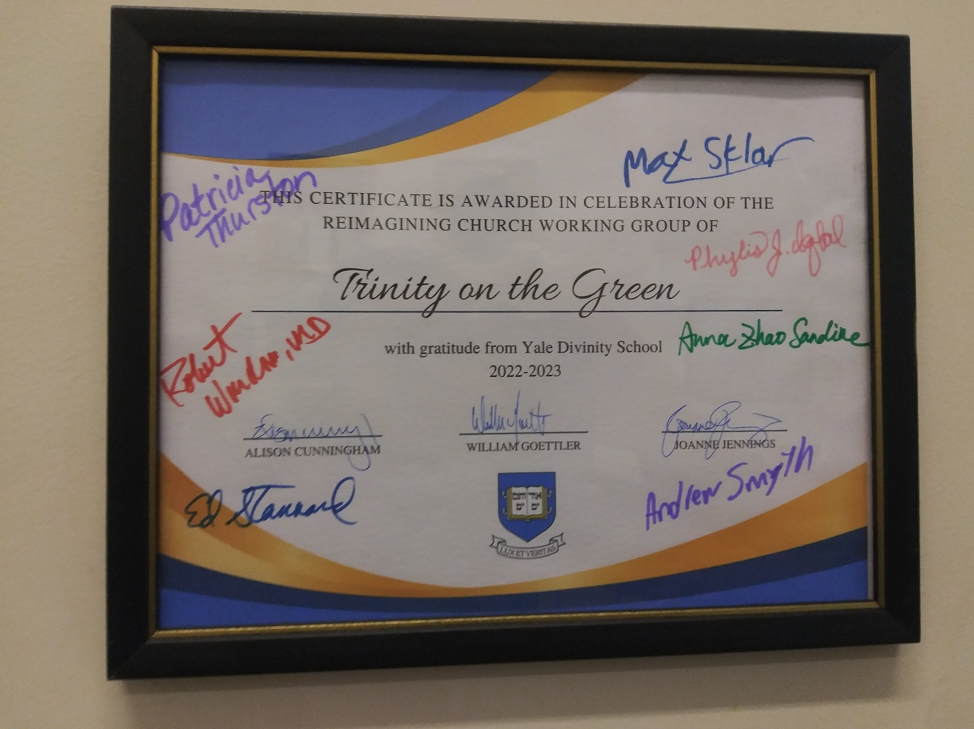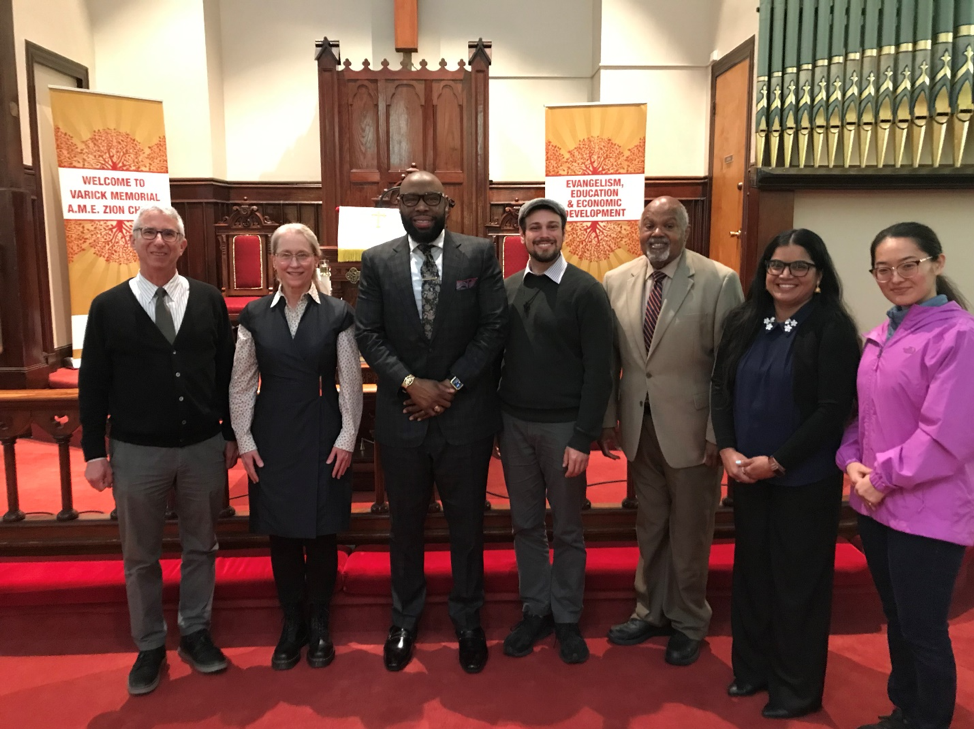Growing Higher but Smaller
A few months ago, about halfway through my year with the re-imagining church program, I had a dream about Trinity on the Green. Whether the dream was a prophetic vision or psychological reflection of the stress of being tasked with such a tall order of “re-imagining the church”, or some mix of I will leave for you to decide. In my dream I was attending a service at Trinity. The pews were packed, almost standing room only, so that I couldn’t sit in my usual pew; yes, even those trying to re-imagine the church swiftly develop those habits! The church looked vividly like it does in real life except, as I searched for a seat, I noticed that the sides of the church had been expanded and more pews had been built. I squeezed my way into a new pew on the right facing the altar between a group of four or five people who I had never met, all buzzing with excitement and anticipation. I had to squint to look up at the altar through the crowds and the distance, but I could make out Rev. Luk making his way up to the altar, and I could tell that we were attending a Eucharist. I prayed the familiar prayers, and things seemed normal except for the crowds, but when Luk raised the host, I felt the church raise up from its foundation, it started shaking, sputtering, jerking back and forth. I noticed that the extensions on the side of the church were perched on rails, and the noises that I heard over the prayers and singing as the church moved back and forth, were the screeching and clanking of a train. If the church was on track to turn into a train and take off as we came to the dismissal I don’t know; I woke up before the dream service ended.
Re-imagining feels something like lifting the building off its foundations and moving it forward, a Herculean task! Through our yearlong exploration of ways to draw on Trinity’s strengths to identify changes and developments for the community I have found that time and again we are shaken out of our complacency, jolting back and forth like a train. Sometimes we are jolted by others who we see as standing in the way of necessary change, other times our own inner resistance to change sets in as we worry about the prospect of having to leave behind our own comfortable prejudices or insularity, our favorite hymn or prayer, forgetting that re-imaging does not necessarily mean renouncing the past, but re-membering and re-inventing what we already have for our times. That is the work we are set to do if we are to be true to the world shaking message of the Gospel and the covenant justice of the Law and the Prophets.
During our re-imagining church year, we went on two field trips to see how other churches have re-imagined their relationship in community and introduced contemporary liturgy. Our second field trip (and last full meeting) was to Varick AME Zion church. We had a most illuminating conversation with Reverend Kelcy Steele that rhymed with much of what we had been thinking about. Pastor Steele told us how not long before he came the church had completely revamped its liturgy; while staying rooted in its old liturgical, elements of modern worship were introduced into the Sunday service seamlessly combining lively contemporary worship and music with traditional hymns and the Creed. Rev. Steele explained how introducing these changes was not easy for many members of the church, because “we all have a golden calf we cling to and think that is church. The key to change is to acknowledge that and deal with it pastorally and with humility; it is true we will make some people (or even ourselves) uncomfortable with change, but we have to be ready to follow the promptings of the Holy Spirit. Rev. Steele said, “we want to grow higher but smaller.” Even change can become a golden calf, and that is why we must always go back to the “why?”, echoing our plenary speaker, Rev. Steele urged us to think, in any re-imagining endeavor why are we doing this? What was our first motivation and are we being true to it? Are we following the still small voice, or the noise of the world? If we remain rooted in God’s “why?”, the change we make can be authentic, and authenticity is what people are longing for today; it was certainly what brought so much joy to us in the first place when we shared our stories of first coming to Trinity where we felt a sense of community, openness to exploring the divine in our life’s journeys. Rev. Steele then spoke of how his church cultivates authenticity and accountability through a lay led curriculum that new potential members join in small groups to explore the spirituality and ministry of the church, rooted in answering the “why?” of new beginnings in the life of church and God. What Rev. Steele was describing was similar to what our group has begun to propose for Trinity; a lay led process of evangelization and welcome so that we can grow deeply together as the body of Christ across our differences and discern where the Spirit is working between us.
I don’t know if this proposal will play out as we have envisioned or if the winds of the Spirit will develop it in different ways. I know however that it is the result of a year of asking questions about our community and as my old mentor used to say “the origin of all proclamation is testimony”; each member of our re-imagining church group has been so candid, truthful, and raw in their searching testimonies this year. I am deeply grateful for each and every person who participated. We have shared the deep joys of this community as well the deep hurt and disappointment. Whatever iteration this group has after I am gone, I hope that authenticity continues to spread sustaining and quickening the life of the church.
When I was riding home with one of our group members Robert Windom, he remarked to me, “God put Trinity where it is for a reason.” Trinity had humble beginnings, but became the church of the upper class, it is located near a bus stop in the middle of the city making it a place that has brought together the settled and the unsettled, the rich and poor. Maybe my dream had this meaning; the church needs to be jolted like a train taking off, jolted so that we can sit together in the pews and truly come to know each other in all our differences not as an anonymous crowd, but as the body of Christ, coming with very different stories but all brought together in this one sacred place. And yet, jolted out of our complacency the “church train” doesn’t move from the Green, for it is rooted in the place in which God put it, and it is there it must bear fruit. This is my prayer for Trinity moving forward and for all who are doing the work of re-imagining church; let’s continue to dream big, and then wake up and little by little, day by day, interaction by interaction, do the work that transforms ourselves and our local communities. Remembering the old Shaker phrase “hands to work hearts to God”, let’s grow higher but smaller!
Top image: Re-imagining church group at Varick with Reverend Steele

Our final group photo with a signed certificate. We are in the Upper Room in the Trinity tower where we started and held so many of our meetings.

The certificate hangs proudly on the wall of the ‘Upper Room’

